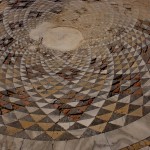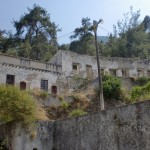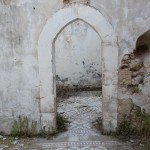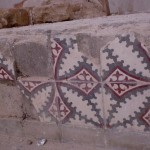 Istanbul religious souvenirs
Istanbul religious souvenirs
Changes can sometimes be perceived in small signs that function as a symbol for deeper lying norms and values. One of those signs in Istanbul is the way souvenir shops deal with presents that have a religious component. When I was here twenty years ago, the presents with different religious background were thoroughly separated from each other. For example in the jewelry market, jewelry with the ‘bismallah’ sign were sold in shops with a muslem owner, golden crosses were sold in shops with a christian owner. In that time there was no mixed collection of presents with religious component to be found at the same shop; absolutely nowhere!
This is something that has really changed now. In many shops it is possible to find articles with islamic, christian and jewish meaning all together not just in the same shop, but also on the same shelve. For someone like me who missed 20 years of Istanbul development, it feels like a radical change. I asked some questions about it in one souvenir shop and the workers there kindly explained to me that they believe in and respect all the prophets. I tried to explain them how this was in the years ’70, ’80, even begin ’90 but they kept telling me how they feel about it now. They couldn’t explain history to me, why it was different before and why it changed. They had Maria and Jesus hanging in their shop next to islamic holy artefacts, see the picture above, and considered that as normal.
I cannot analyze this yet, it would need a more indept insight but as said I have seen this mixture in many shops in Istanbul city already. These are small signs for what could be a more fundamental change. My first and overall impression is that the selfconfidence of the Turks has increased a lot in daily life, and tolerance often comes with selfconfidence. Another way of looking at it could be that the Christian minorities form no more threat whatsoever to the Turks which allows a different attitude. Finally, it is also possible to look at this businesswise. The Turks were always good in customer service, eager to help customers out, create strong relationships and earn some money; maybe they have just added these new products to their buckets…
Other interesting blogs:
Minorities in Gaziantep
Istanbul: mysterious tickets
Mikve Israel-Immanuel synagogue
Ramallah: Jews removing Christians from Middle East


 In Northern Cyprus heritage, two cultures meet. Greek see the way the Turks deal with their monuments as a proof that Turks are barbarians (barbaros = the ancient Greek word for a stranger, a non-Greek). Just read some Greek websites where these issues are discussed and you will notice a consequent approach: tell the world how terrible the Turks are. In several blogs I have shown pictures that prove them right.
In Northern Cyprus heritage, two cultures meet. Greek see the way the Turks deal with their monuments as a proof that Turks are barbarians (barbaros = the ancient Greek word for a stranger, a non-Greek). Just read some Greek websites where these issues are discussed and you will notice a consequent approach: tell the world how terrible the Turks are. In several blogs I have shown pictures that prove them right.


